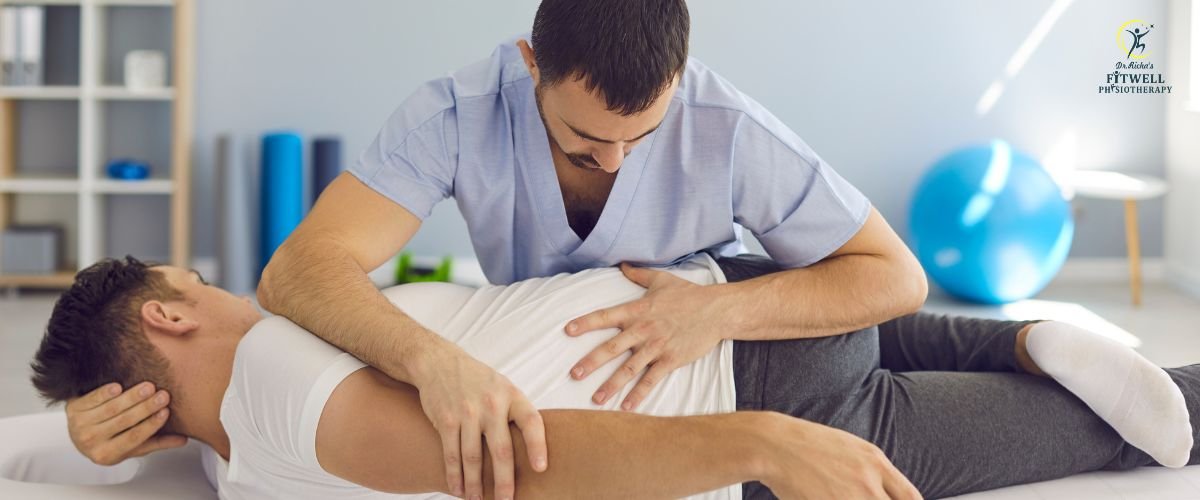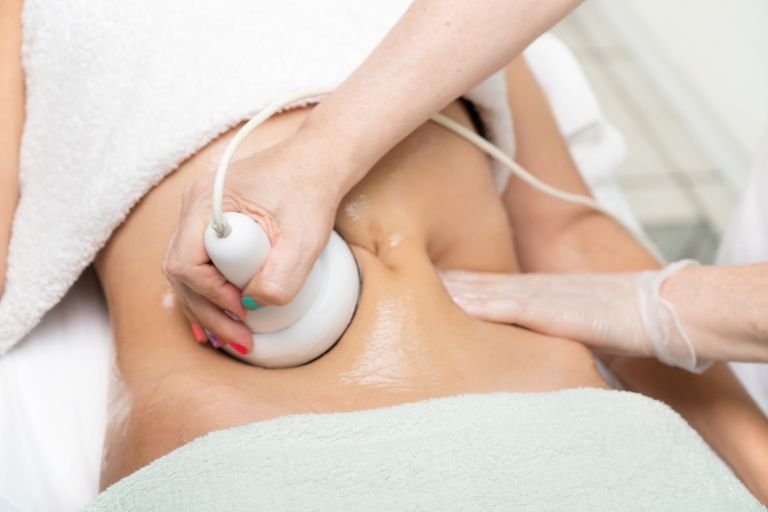- Fitwell Physiotherapy
Manual Therapy

Manual therapy encompasses a variety of hands-on techniques performed by trained healthcare professionals to treat musculoskeletal pain and dysfunction. Here’s an overview:
Please submit your details below.
Types of Manual Therapy
-
Joint Mobilization:
- Description: Involves the application of slow, passive movements to the joints.
- How It’s Performed: The therapist applies controlled forces to move the joint in specific directions.
- Uses: To restore joint mobility and relieve pain.
-
Manipulation (or Spinal Manipulative Therapy):
- Description: High-velocity, low-amplitude thrusts to the spine or other joints.
- How It’s Performed: A quick, precise movement is applied to a joint beyond its active range of motion.
- Uses: To correct alignment and improve function.
-
Soft Tissue Techniques:
- Description: Includes massage, myofascial release, and trigger point therapy.
- How It’s Performed: Techniques vary from gentle kneading to deep pressure.
- Uses: To reduce muscle tension, improve blood flow, and relieve pain.
-
Muscle Energy Techniques (MET):
- Description: Combines stretching and muscle contraction.
- How It’s Performed: The patient contracts a muscle against resistance provided by the therapist.
- Uses: To lengthen muscles and improve range of motion.
-
Strain-Counterstrain:
- Description: Aims to reduce muscle spasms and pain by positioning the body to reduce tension.
- How It’s Performed: The patient is positioned to relax the targeted muscle, held for about 90 seconds, then slowly returned to a neutral position.
- Uses: To alleviate acute and chronic muscle pain.
Contraindications
Manual therapy is not suitable for everyone. Contraindications include:
- Acute Inflammation: In conditions like rheumatoid arthritis flare-ups.
- Bone Diseases: Such as osteoporosis or osteomyelitis.
- Fractures: Recent or unstable fractures.
- Severe Osteoarthritis: Advanced stages may not tolerate manipulation.
- Neurological Conditions: For example, spinal cord injuries or severe spinal stenosis.
- Vascular Disorders: Like severe atherosclerosis or aneurysms.
- Certain Cancers: Especially if metastasis to the bones is suspected.
What to Expect During a Session
- Assessment: The therapist will start with a thorough assessment, including medical history, physical examination, and possibly imaging studies.
- Treatment Plan: Based on the assessment, a personalized treatment plan is developed.
- Technique Application: The therapist will apply the chosen manual therapy techniques, explaining each step to ensure patient comfort and understanding.
- Feedback: Throughout the session, the therapist will seek feedback to adjust the technique as needed.
- Post-Treatment Advice: Recommendations may include exercises, postural advice, and follow-up sessions.
Benefits of Manual Therapy
- Pain Relief: Effective in reducing pain from various musculoskeletal conditions.
- Improved Mobility: Helps restore joint and muscle function.
- Enhanced Circulation: Techniques like massage improve blood flow.
- Reduced Muscle Tension: Soft tissue techniques alleviate muscle tightness and spasms.
- Better Function: Improves overall movement patterns and functional ability.
- Decreased Need for Medication: Non-invasive and can reduce reliance on pain medications.
- Patient Education: Provides valuable information on posture, ergonomics, and exercise.
Summary
Manual therapy encompasses a variety of hands-on techniques aimed at alleviating pain, improving mobility, and enhancing overall musculoskeletal health. With proper assessment and technique application, it offers numerous benefits, though it’s crucial to consider contraindications to ensure patient safety.
Frequently Asked Questions
Manual therapy can effectively address various musculoskeletal issues such as back pain, neck pain, joint stiffness, muscle tension, sports injuries, and postural problems. It’s also used in rehabilitation after surgeries or injuries.
Unlike medication, which primarily aims to manage symptoms, manual therapy focuses on addressing the root cause of musculoskeletal issues by restoring mobility, improving function, and reducing pain. It’s non-invasive and typically doesn’t involve the risks associated with surgery.
Manual therapy techniques are generally not painful, though some discomfort might be experienced, especially if the muscles or tissues are tight or sensitive. However, therapists are trained to adjust the intensity of treatment based on individual comfort levels, and communication with the therapist can help manage any discomfort.
The number of sessions required varies depending on factors such as the severity of the condition, individual response to treatment, and treatment goals. Some people may experience significant improvement after just a few sessions, while others may need ongoing treatment for chronic conditions.
Manual therapy can benefit people of all ages and activity levels, from athletes looking to optimize performance to individuals seeking relief from chronic pain or injury. It’s suitable for those recovering from surgery, managing chronic conditions, or simply aiming to improve mobility and function. However, it’s essential to consult with a healthcare professional to determine if manual therapy is appropriate for your specific needs.
Related Therapies
How Fitwell Physiotherapy Can Help?
Dr. Richa’s Fitwell physiotherapy has an extensive team of physiotherapists all within their own specialist areas of physiotherapy. Whatever your condition, we guarantee that we will have the best physiotherapist for you. We assess, diagnose, plan, cure and care for you.
Fitwell Physiotherapy Clinic, Pune provides you best physiotherapy treatment in Kharadi, pune. We also serve Chandan Nagar, Vadgaon Sheri, Keshav Nagar, Wagholi & nearby Areas in Pune. We are experts in treating Neck Pain, Hand Pain, Back Pain, Lower Back Pain, Knee Pain, Stiff Neck, Sciatica, Arthritis, Stroke Paralysis & Post Surgical Rehab.
We provide Specialized physiotherapy treatments in Sports Injuries, Pre and post Surgery, Neurologic, Pediatric, Chronic Pain/Fatigue, Rheumatology, Women’s Health, Men’s Health, Ergonomics, Vestibular, Amputees & all sort of Pain treatment and lifestyle conditions.



























